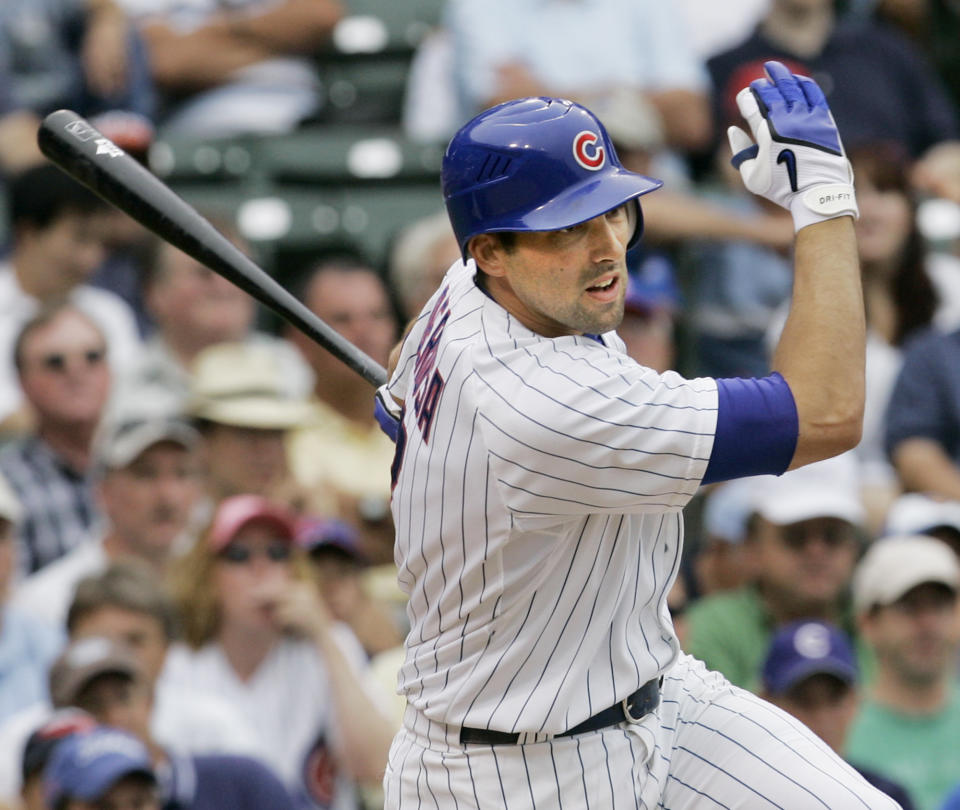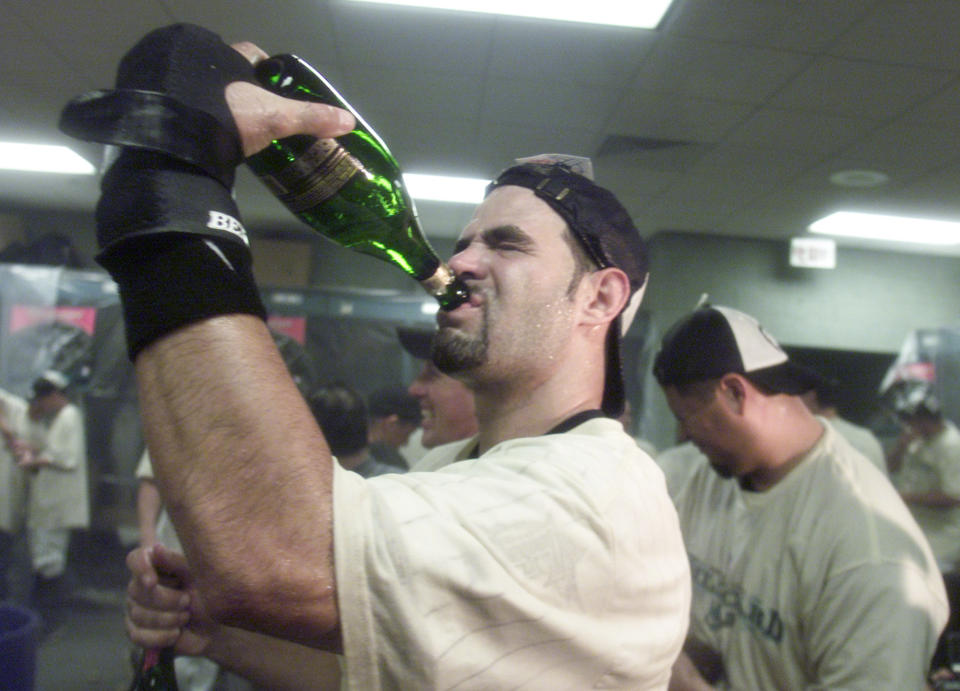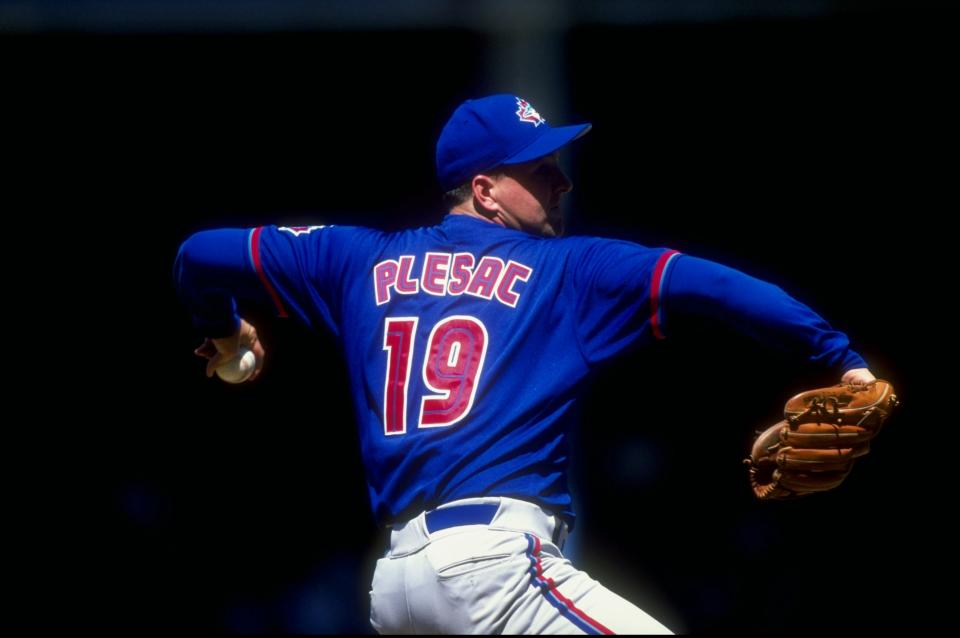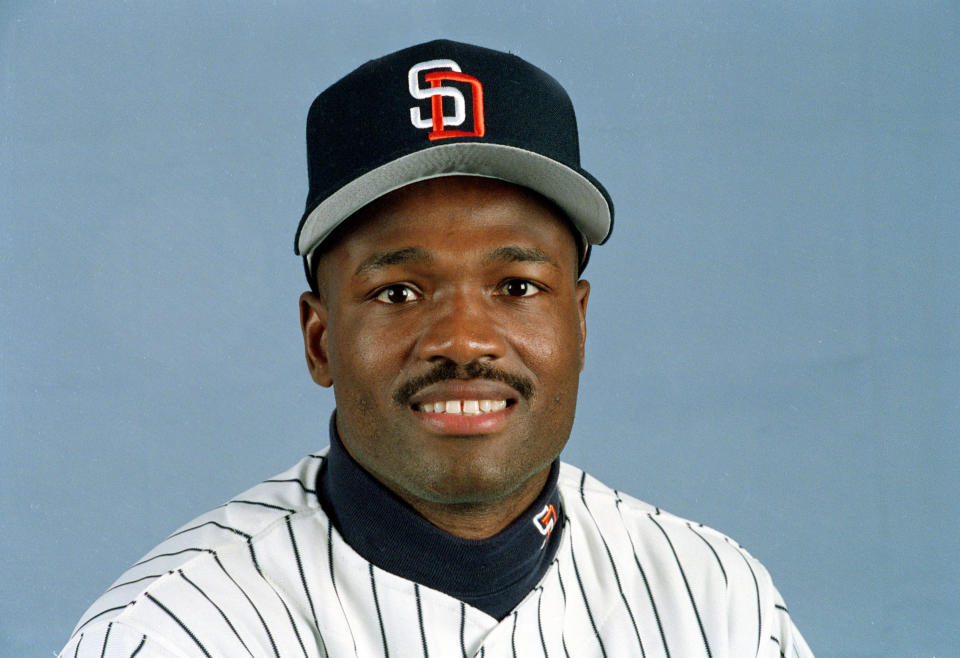Winter Meetings 2018: MLB players reveal how they dealt with getting traded
Mark DeRosa approached the third tee box knowing this was going to be a day to remember. The party bus was already booked for later that night. DeRosa, his wife and 18 of their friends were going to ring in the new year in style. But first, there was golf. After DeRosa finished up a round with Jeff Francoeur, Chipper Jones and Brian McCann, he would run home and shower before heading out on the town. It was the perfect day to end an excellent year for DeRosa.
Then, the phone call came.
DeRosa looked at the phone and immediately knew something was off. Chicago Cubs general manager Jim Hendry had only called once before: The day DeRosa signed a three-year, $13 million deal with the team. This call wasn’t going to be as fun.
DeRosa had been traded to the Cleveland Indians. He found out on the golf course on New Year’s Eve surrounded by his former Atlanta Braves teammates.
The news came as a shock. Not just because DeRosa thought there was no way the news would come on New Year’s Eve, but also because he wasn’t ready to go. DeRosa was coming off his finest season in the majors. In 2008, the 33-year-old hit .285/.376/.481, with 21 home runs, in 593 plate appearances with the Cubs. DeRosa not only felt he had lived up to his contract, but he loved Chicago. He loved the team, he loved his teammates and he loved the fans.
The phone call didn’t last long.
“I was so upset by it that I really didn’t want to hear what he had to say,” DeRosa says. “I wasn’t necessarily upset at him personally, I was just upset at the situation. We really liked Chicago and I felt like I fit well. I hung up the phone and basically huddled around for 15 more holes like I had lost my puppy.”

That is the trade scenario every player fears. With the 2018 MLB winter meetings getting started Monday in Las Vegas, players will hope they don’t find themselves caught off guard and angry like DeRosa.
To understand what it’s like to get traded — whether you’re an established player, a prospect or just a fan — Yahoo Sports asked four former players turned MLB Network analysts to share their stories about getting traded.
DeRosa, Mike Lowell, Dan Plesac and Harold Reynolds all shared their trade stories and experiences. They’ll likely dispense plenty of that advice during MLB Network’s coverage of the 2018 winter meetings, which began Sunday and will continue until Thursday.
The result: There is no common reaction to getting traded. Emotions can range from anger to excitement to uncertainty to befuddlement.
DeRosa’s initial reaction may have been anger, but Lowell’s was excitement. Lowell entered the 1998 season aware of trade rumors. He was expected to be part of a package for Randy Johnson, and while he was actually removed from the field during batting practice, that deal never materialized.
When it fell through, Yankees general manager Brian Cashman told Lowell’s agents that Lowell would be the Yankees third baseman in 1999, but there was a catch.
“Brian Cashman mentioned to my agents that in ’98 if they make the playoffs, go to the World Series, win the World Series and Scott Brosius is the World Series MVP, that’s the only way I would not be a third baseman next year,” Lowell says. “Sure enough, all three happened.”
Brosius received a three-year deal from the Yankees, all but guaranteeing Lowell would go back to Triple-A again if he remained with the team. Cashman knew Lowell didn’t want that, so he called to deliver another message to the young prospect: I promise you your minor-league career is over.

On Feb. 1, 1999, Lowell was dealt to the Florida Marlins. He couldn’t have been more elated about the opportunity.
“I welcomed that trade,” Lowell says. “That was something that I was actually delighted about because I just felt like I had a really good chance to start my career.”
The Marlins were the perfect team for Lowell. He not only grew up in Florida, but he would go to a team that featured a lot of young players. And that meant the Marlins would be patient as he found his footing in the majors. It turned out to be the perfect situation for him.
For Dan Plesac, there wasn’t anger. There was uncertainty. Plesac, who had been in the majors for 11 seasons, had never been traded in his career.
When the time came for him to get shipped out, Plesac tried to influence the team’s decision. He told Pittsburgh Pirates general manager Cam Bonifay he preferred to remain in the National League. Bonifay said he would do his best to honor that request, but made it clear improving the Pirates was the No. 1 goal. That’s when Plesac realized it was the first time in his baseball career that he didn’t control his own fate.
Plesac was sent to the Toronto Blue Jays in 1996. He was back in the American League, and he wasn’t sure he was on board with that.
“My initial feeling was I was a bit shocked,” Plesac says. “Getting traded to an AL team, I was disappointed. I got traded there, and I can’t say I was overly excited about the trade.”
Problem was, he didn’t know Toronto all that well. He had only experienced the team and the city as a visiting player.
It didn’t take long for Plesac to come around. While it helps that Roger Clemens and Jose Canseco joined the team shortly after Plesac joined, it was the city and the organization that Plesac came to love.
“As much as I was displeased with the trade when it was announced, by May of 1997 I couldn’t have been in a better place,” he says. “I was kind of disappointed in myself that I looked at it like it was such a bad deal for me at the time. In hindsight, looking back at it it was probably the best.
“I thoroughly enjoyed playing in Toronto as much as anybody who ever wore a Blue Jays uniform.”

In Reynolds’ case, there was absurdity. After signing with the San Diego Padres, Reynolds started prepping himself to play with his new club. He spent the winter working out with Tony Gwynn, and envisioned the two of them hitting back-to-back near the top of the Padres’ lineup.
But when spring training rolled around, the Padres had other plans. A few weeks into spring, Reynolds was told by Padres general manager Randy Smith that he was going to be traded.
The next day, the Padres informed Reynolds that they were close to a deal, but told him to dress and prepare to play in that day’s spring game.
Reynolds prepped for the contest, and then got the news. He had been traded to the California Angels … the team the Padres were playing that day.
Reynolds simply walked across the field and joined his new team.
“I walk over to the Angels clubhouse, take my bats and everything with me, and I start and play against the Padres and get a couple hits that day,” he says.

Reynolds took the move in stride. He was an established veteran at that point, and knew trades were just part of the game.
That might not have been the case had Reynolds been traded earlier in his career. He knows this because he was almost traded early on. Reynolds was nearly traded from the Seattle Mariners to the San Francisco Giants.
The two teams had agreed on a deal, according to Reynolds, until something went wrong.
“We had a deal worked out with the Giants,” he says “[The Mariners] wanted to see this left-handed pitcher throw. He broke his ankle in the game that morning, so the deal got called off.”
That trade would have been much more difficult on Reynolds because he would have been traded by the team that drafted him.
Plesac expressed a similar sentiment.
“The first time you change organizations, it’s a shock,” he said. “Whether it’s free agency, whether you get released, whether you get traded. It’s always a shock. Because I think every player envisions the team that they sign with that’s where your career is going to be.”
Even that isn’t a commonly-held belief by players who were traded, though. In Lowell’s case, he embraced getting traded because it led to more playing time.
There were a few takeaways from our admittedly small sample of players who were traded. The first being that changing teams gets easier after you’ve done it once. Reynolds mentioned that he figured out the game was a business, and that helped him cope. Lowell said feeling more secure about his standing in the majors helped when the Marlins traded him to the Boston Red Sox.
The second being that every player eventually enjoyed their time with their new club. Plesac adapted to Toronto and Lowell got a chance to establish himself while playing near the place he grew up.
Even DeRosa — who was furious about being traded — eventually came around on his new team, saying Cleveland was a “great organization” with “great people.”
There no way to predict how a player will deal with getting traded. There are simply too many factors that go into each deal, and players are human. They are allowed to respond in different ways.
But in our sampling, every player traded grew to appreciate their new club. The wounds of being traded faded with time.
For players like DeRosa, that might be tough to envision initially. But it’s important to note that there is one constant: Trades involve multiple teams.
While it’s easy to focus on the team giving you away, players don’t get traded unless there’s another team out there that really wants them.
– – – – – – –
Chris Cwik is a writer for Yahoo Sports. Have a tip? Email him at christophercwik@yahoo.com or follow him on Twitter! Follow @Chris_Cwik
More from Yahoo Sports:
• Brown: Remembering Luis Valbuena and his love of baseball
• Warriors remind everyone in NBA who’s boss
• Reports: Ayton, Booker ‘exchanged words’ in front of media after Suns loss
• Which college football players are sitting out bowl games?

 Yahoo Sports
Yahoo Sports 